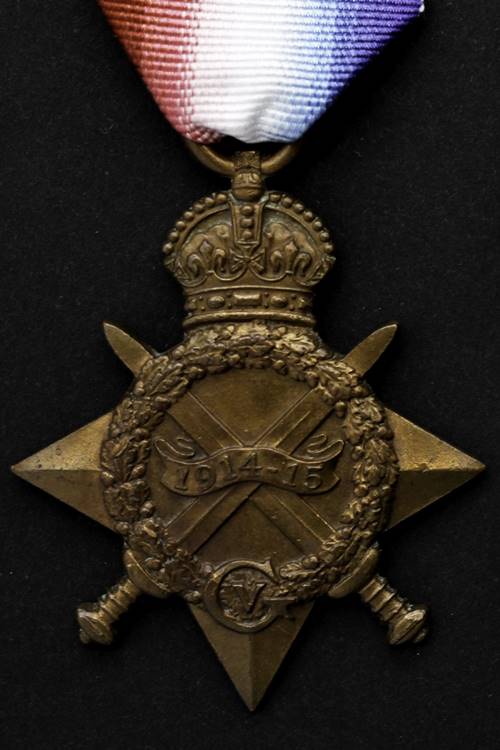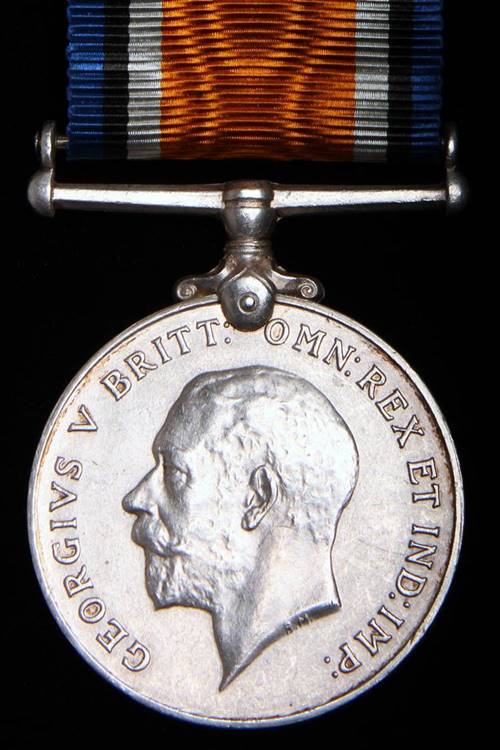This article looks at campaign medals issued to Indian soldiers for service during the First World War and will help you to interpret the information found on them. I have written separate articles on each of the medals and a series of guides to help you research soldiers who served in the Indian Army:
Indian First World War Medals
The destruction of Indian First World War service records and medal index cards has meant that a medal is often the only way to build up a picture of a soldier’s military service. Large numbers of Indian soldiers were awarded at least two medals, the Victory Medal and British War Medal, for their service in the First World War. However, Indian medals are rarely found in complete groups. Over the years the medals have become separated, mainly due to the following reasons:
- On the death of the original recipient, their medals were divided up among family members, usually their children.
- Silver campaign medals like the British War Medal tended to be melted down for their scrap value.
- It was practice for many years on the Indian subcontinent for medal dealers to split up military medals based on their metal content. This has meant that a medal group awarded to an Indian soldier is often in the hands of two or more collectors.
- Many medals were lost or split up during the upheavals caused by the Partition of India.
The 1914 Star (Mons Star)
The 1914 Star is the most important medal for tracing an Indian soldier’s service. To have been awarded this medal, a soldier had to serve in France between 5 August and 22 November 1914. The medal is often referred to as the Mons Star, after the famous battle fought on 23 August 1914. The only Indian Army soldiers involved in the battle were a handful of British Indian Army officers serving with the British Army. A clasp was also awarded if a soldier had served under fire or come into range of German artillery. It’s very rare to find a clasp on a 1914 Star ribbon to an Indian soldier, even when they qualified. This medal is helpful in the following ways:
- A soldier would have joined his unit prior to the outbreak of war.
- Due to his pre-war service, it is easier to work out an enlistment date.
- As he embarked with the first units to leave India for service in France, his movements can be accurately followed by looking at the relevant war diary up until the unit became engaged in battle. War diaries can be downloaded for a small fee from the National Archives and I have catalogued Indian infantry and cavalry diaries.
- The medal was impressed with the rank the soldier held when he first entered France. The Victory Medal and British War Medal show the rank of the soldier when the Armistice came into effect on 11 November 1918.

The 1914/15 Star
The 1914/15 Star was awarded to soldiers who served in a theatre of war between 5 August 1914 and 31 December 1915 and did not qualify for the 1914 Star. You could not be awarded both medals. Far more Indian soldiers were awarded the 1914/15 Star than the 1914 Star due to the number of Indian Expeditionary Forces which served in a variety of theatres of war during the qualifying period. This medal is not nearly as helpful in building up a service history due to the sixteen-month time span in which a soldier could qualify. There is also the added problem that many soldiers were sent as drafts to serve with other units during this period. Despite this, the 1914/15 Star can still be helpful:
- A soldier had to serve in a theatre of war before 31 December 1915 to be eligible.
- By consulting the relevant war diary, it is possible to build up an idea of their likely experiences.
- Depending on the unit (some units suffered heavy casualties, so new recruits were more liable to be sent overseas early in the war and be eligible for a 1914/15 Star), the medal usually indicates enlistment prior to August 1914.
- The rank on the medal is that which a soldier held when they first entered a theatre of war.
The British War Medal
The British War Medal had the most complex award criteria of any First World War campaign medal but in essence, it was awarded for service overseas, though not necessarily in a theatre of war, between 5 August 1914 and 11 November 1918. This was later extended to allow soldiers who took part in operations in Russia, including many Indian soldiers fighting in modern-day Turkmenistan, to qualify up until midnight on 1-2 July 1920. The medal is not very helpful in trying to deduce a soldier’s service history due to its extensive qualifying period. Some Indian soldiers qualified for the British War Medal through service in India during the war, usually in a number of small campaigns on the North West Frontier. Unfortunately, many British War Medals to Indian soldiers were melted down for their scrap silver value.
- Look at the regimental number and try to see if it is likely a soldier enlisted pre-war.
- If they did, then the soldier was likely to have served with the unit when it first went overseas.
- The medal has the highest rank held by the recipient during service overseas soldier when the Armistice came into effect on 11 November 1918 unless they had been demoted for misconduct. By checking it against a 1914 or 1914/15 Star you can tell if a soldier was promoted.
The Victory Medal
The Victory Medal is the medal most likely to be encountered and was awarded to Indian soldiers who served in a theatre of war between 5 August 1914 and 11 November 1918. Like the British War Medal, this was later extended to soldiers who took part in operations in Russia. The theatre of war didn’t necessarily have to be overseas for Indian soldiers, as many qualified for this medal while serving in a number of small campaigns fought on the North West Frontier of India (present-day Pakistan).
- Look at the regimental number and work out an enlistment date to see if it was likely a soldier had pre-war service.
- If they did, then he is likely to have served with the unit when it first went overseas.
- The medal was impressed with the highest rank held by the recipient during service overseas when the Armistice came into effect on 11 November 1918, unless they had been demoted for misconduct. By checking it against a 1914 or 1914/15 Star, you can tell if a soldier was promoted.
Condition of First World War Indian Medals
It has been nearly one hundred years since the first campaign medals were issued to Indian soldiers for their service in the First World War. Over the intervening years, many have suffered considerable amounts of damage when compared to those awarded to British and other Allied soldiers. The medal below is a Victory Medal awarded to a Sepoy in the 127th Queen Mary’s Own Baluch Light Infantry. Not only is the medal missing the ring through which the ribbon passes but it is also very badly worn and the body of Victory has been ground down.
The second medal shows four cuts to its rim, probably caused by the blade of a local jeweller testing its metal content. Medals can tarnish quickly, making it difficult to determine their composition. These test marks are usually found on the silver British War Medal.





 The second medal shows four cuts to its rim, probably caused by the blade of a local jeweller testing its metal content. Medals can tarnish quickly, making it difficult to determine their composition. These test marks are usually found on the silver British War Medal.
The second medal shows four cuts to its rim, probably caused by the blade of a local jeweller testing its metal content. Medals can tarnish quickly, making it difficult to determine their composition. These test marks are usually found on the silver British War Medal.